A Veritable Viticultural Revolution at Domaine Vacheron: Sancerre Cuvées Reflective of The Region’s Wide Soil Diversity in White, Rosé and Red. (6-Bottle Pack $318)
Just as the Loire River runs through the heart of France, Sancerre pierces the heart of summertime and provides an unadorned synthesis of the scents we associate with the easy season: The whites are redolent of cut grass and Meyer lemon, the rare reds are full of luscious cherry and campfire smoke and the rosés are all about wild strawberries and picnic watermelon. These wines are some of the most elegantly perfumed in the world, meant to be enjoyed as much with the nose as with the mouth.
This week’s package is a selection from one of Sancerre’s elite estates, Domaine Vacheron. The featured bottles reflect a wonderful cross-section of Vacheron’s variety with samples from the lieux-dits that form the best of their acreage, including Guigne Chèvre, En Grands Champs, Paradis, and Chambrates.
Jacqueline Friedrich opened ‘The Wines of Loire’ with her description of the domain: “Domaine Vacheron goes from strength to strength and shows no signs of stopping.”
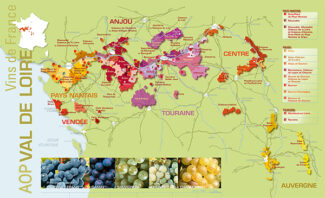
Wine Siblings: Sancerre and Chablis
Brothers from another mother or sisters from another mister; either way, the land beneath Sancerre and Chablis springs from the same prehistory. Classified in the middle of the 18th century by French geologist Alcide d’Obigny while he was working near the English town of Kimmeridge, he identified a unique layer of dark marl and called it ‘Kimmeridgian.’
Still, as in siblings, there are distinct differences in the DNA of English Kimmeridgian and French Kimmeridgian. The French layer is a relatively uniform chalky marl with thin limestone containing rich layers of seashells. This is because strata formed from the post Jurassic period continued to be deposited in the shallow sea areas which once covered part of France. The way these layers interact is key to the reason that French Kimmeridgian soils produce some of the world’s most heralded wine. The marly soil provides good structure, ideal water-retention and is easy to cultivate while hard limestone Portlandian contains numerous fossil fragments and, having been repeatedly shattered by frost, offers good aeration and ideal drainage along gentle slopes.
Chablis is a significant part of the Kimmeridgian chain; mid-slope vineyards in Chablis match almost perfectly to the Kimmeridgian outcrop, with the soft, carbonate-rich rock being covered by Portlandian limestone and supported by other limestone deposits. Sancerre, meanwhile, sits on top a fault ridge; the eastern side has a layer of Cretaceous soils while the west side is covered with brush and gravel slopes. Further west the best vineyards sit on the classic Portlandian-Kimmeridgian soil combination, producing a classic example of ‘terroir’.
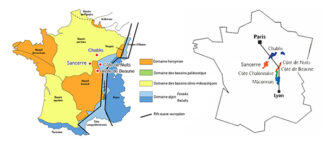
Sancerre: Purity Manifest
The almost clichéd emphasis placed on Sancerre’s purity is a result of two factors: First, the region is relatively northern, so a hallmark of nearly all Sancerre—red, white or pink—is its bright acidity—preserved in the grapes by cool nights and temperate days. The pH of a wine determines its mouthfeel, and the higher the acidity, the more sizzling is the sensation of freshness and clarity on the palate, often described as ‘purity’. Of equal importance, very little oak is used in the maturation process of wines from Sancerre, and the flavors associated with oak—butter, clove, vanilla and caramel—however desirable in Burgundy, tend to mask some of the fruit-driven notes. It’s one of the reasons that oak-free Chablis is considered the purest incarnation of Chardonnay, and likewise, the neutral barrel or stainless steel/cement aging of Sancerre’s Sauvignon Blanc, Pinot Noir and occasionally Gamay offers the best results for preserving the natural flavors inherent in the juice.
At Vacheron, purity is not only made manifest in the final product, but in the attitude: “Wine is just about mineral and being organic,” Jean-Laurent Vacheron says simply.
Domaine Vacheron
Certified by Biodyvin in 2005, the move to organic agriculture by the two young cousins Jean-Laurent and Jean-Dominique Vacheron has revolutionized the quality of the old domain’s output. No synthetic material is used in the vineyard, harvests are carried out exclusively by hand and fertilizer is only what matures in the compost pile. All the biodynamics in the world does not change location, and in fairness, the cousins inherited some of the most coveted parcels in the appellation—acres that had been in the Vacheron family for nine generations—and then embarked on a series of shrewd land purchases. They now oversee well over a hundred acres of prime vineyard land.
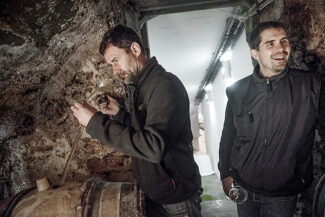
Jean-Dominique & Jean-Laurent Vacheron • Domaine Vacheron • (Hejvin)
Using a Burgundian approach, they vinify parcels by terroir and blends that vary from year to year. Although Sancerre was predominantly a red wine-producing region until phylloxera decimated it in the late 19th century (with Sauvignon Blanc planted in its place) in much of modern Sancerre, Pinot Noir is an afterthought. At Vacheron, it receives special focus, and on soils just a couple of hours west of Nuits-Saint-Georges.
As to soils, there are three primary types that typify Sancerre; silex, or flinty soil, runs in a narrow band along a fault line that passes under the town of Sancerre; Kimmeridgian marl, also known as ‘terres blanches’ because the chalky clay soil turns white in dry periods; and ‘caillottes’, or Oxfordian limestone. Each type imprints its own recognizable character on the wine— Oxfordian soils produce wines that are delicate and perfumed; Kimmeridgian soil yields fruiter wine whose aggressive acidity make them very age-worthy while silex yields brooding, mineral-tinged wines.

The flint soil is found primarily in the eastern part of the appellation and across the river in Pouilly Fumé, and almost all of Vacheron’s holdings are on this mineral-rich soil type. Says Jean-Dominique Vacheron: “Silex produces vertical, long-aging Sancerre bottlings and our biggest aim is to let this shine. Our Sancerre blanc comes from vines planted on the fault line between silex and caillottes.”
Sum of The Parts
Before the Vacheron cousins took over the domain, vinification of specific terroir was not commonly done in Sancerre, nor were altering blends from year to year. Certainly, they are the only producers in the region with a barrel-room made up of casks sourced from Domaine Romanée Conti. This is not an attempt to ‘be’ Burgundy, according to Jean-Laurent Vacheron, “although you could make some money thinking like that.” He adds, “There are two reasons we are doing this; first it is because we like to be here and secondly, it is to keep within the ramparts of Sancerre. After all, what is Sancerre if there are no winemakers?”
He has a point: Like much of rural France, the population of Sancerre has halved over the past century and now has a population less than 1500. “Winemakers have also been part of this exodus so, where there was once 20 winemakers within the town walls there are now just two or three,” says Jean-Laurent.
Certainly, there are those who argue that Jean-Laurent and Jean-Dominique Vacheron are the best winemakers in Sancerre. The ‘two Jeans’ farm eight lieux-dits that, taken individually, are among the most highly regarded wines in France, but taken as a ‘sum of the parts’, the cousins have created a unique Vacheron style that, like any successful synergy, is somewhat greater than the whole. As a further nod to the future, both Jeans have sons studying viticulture and intending to carry on the family tradition.
The offered 6-bottle package is comprised of two of each of the following wines at $318.
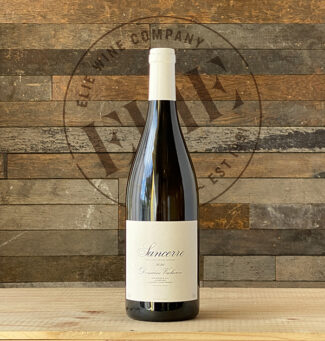 Domaine Vacheron, 2020 Sancerre Blanc ($51)
Domaine Vacheron, 2020 Sancerre Blanc ($51)
Aged in stainless steel tank for 8 months, this is a remarkable complex wine for a ‘starter’ Sancerre; it has the full-blown profile of an ethereal Loire Sauvignon Blanc with notes of gooseberry, nettle and boxwood behind a zesty core of lime, passion fruit, and the wonderful chalkiness that typifies a top Sancerre with a finish tinged with smoke.
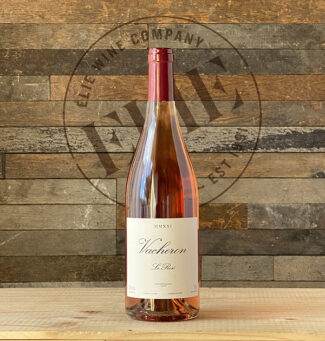 Vacheron ‘Le Rosé’, 2021 Sancerre Rosé ($54)
Vacheron ‘Le Rosé’, 2021 Sancerre Rosé ($54)
Very few rosés are allocated or considered collectable; this is a noted exception from Vacheron. Made from biodynamic Pinot Noir, its discrete nose opens gradually, evoking scents of ripe, freshly sliced strawberries, orange zest, chamomile and cherry tart. It leans more toward citrus in the mid-palate and finishes with grapefruit tones.
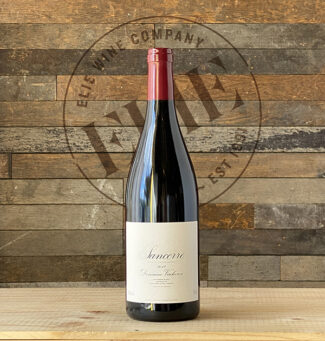 Domaine Vacheron, 2018 Sancerre Rouge ($54)
Domaine Vacheron, 2018 Sancerre Rouge ($54)
Red wine makes up about 20% of Vacheron’s production. This one hails from plots of thin limestone soils where the vine roots struggle and produce small, intensely concentrated berries. Traditionally, the Vacheron cousins were one of the few Sancerre producers who could coax depth and richness from Pinot Noir, and with the climate warming, their reds keep improving. As always, the grapes are hand harvested, whole cluster pressed and fermented with ambient yeast, giving unique character to a spicy nose of ripe black cherries, dark chocolate and pepper. This is a seamless and silken Pinot Noir with lingering freshness, grip and salinity on the finish.
The Twin Years: 2018 and 2019
The back-to-back vintages 2018 and 2019 represent something of a climactic miracle. Even as a stand-alone, 2018 is considered to be one of the most exceptional vintages seen in the region for half a century. Taken together with a spectacular 2019, they are twin towers of triumph.
2018 began with fantastic spring that allowed for successful flowering and fruit set without any of the usual problems that normally occur with rain, hail or frost, and a hot summer developed the ripe semi-tropical flavors associated with the best Sauvignon Blanc. 2019 was a bit cooler, but produced grapes where the coveted acids that reign in aggressive fruit notes.
Tapping the source directly, Vacheron comments, “2018 and 2019 are very similar in the way they are constructed, even if the alcohol is slightly higher in 2018. The two vintages tend to show that it is possible to make wines that have good freshness despite low acidities because the minerality superseded the acidity. 2018 is without a doubt a vintage that will mark people’s memories, and will remain a reference in Sancerre. It’s the kind of vintage that helps grow a heighten a generation of wine makers and their appellations.”
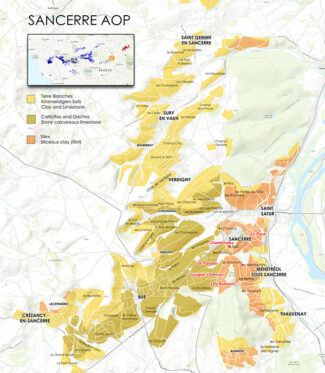
Vacheron’s Sancerre Climats:
Expressing Localities
Sancerre is generally made from a single cultivar, but the geography is such that many permutations influence the style of an individual wine. Altitude broadly varies from 300 feet to over a thousand; the bands of soil types have already been mentioned, and a hilly landscape that can harness more warmth or less depending on the aspect.
A significant reason that the Vacherons have embraced biodynamics with such passion is that they consider it among the best agricultural technique to showcase the distinct terroirs of their holdings. Sancerre is not a land of designated ‘crus’—Burgundy’s way of denoting the best sites—and instead relies on named vineyards called ‘climats’ or ‘lieux-dits’. These may be considered the crème de le crème among Sancerre’s vineyards and some (Les Monts Damnés and Le Cul de Beaujeu) may be better known than others. The Vacherons have parcels in most of the top lieux-dits, even those less familiar to many of Sancerre’s most ardent fans, including ‘Le Paradis’ and ‘Chambrates’, just outside the Sancerre city walls.
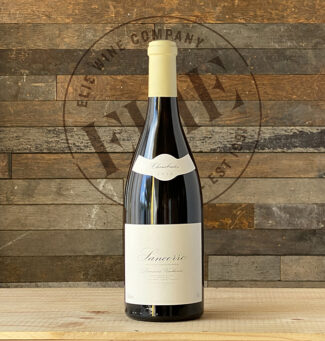 Climat ‘Chambrates’ Domaine Vacheron 2019 Sancerre Blanc ($75)
Climat ‘Chambrates’ Domaine Vacheron 2019 Sancerre Blanc ($75)
Chambrates is located on a plateau above Le Paradis on limestone and red clay soils. Citrus and vanilla ice cream on the nose; the palate is filled with tension and vitality, ranging between notes of candied orange peel, grated ginger, lemon curd and the elusive quality of stoniness that appears at the finish of the best Sancerre.
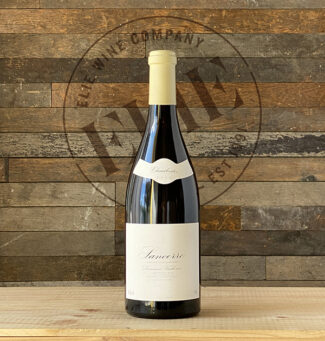 Climat ‘Chambrates’ Domaine Vacheron 2018 Sancerre Blanc ($89)
Climat ‘Chambrates’ Domaine Vacheron 2018 Sancerre Blanc ($89)
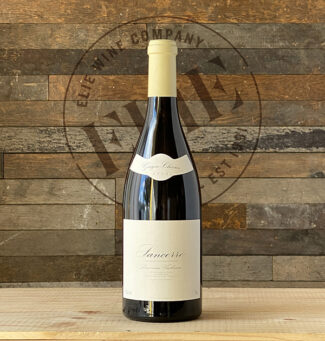 Climat ‘Guigne-Chèvres’ Domaine Vacheron 2019 Sancerre Blanc ($75)
Climat ‘Guigne-Chèvres’ Domaine Vacheron 2019 Sancerre Blanc ($75)
Guigne-Chèvres is a north-facing site with a complex terroir of silex above a shallow layer of limestone and red clay. A tightly-textured wine boasting a strong minerality that rises from crisp citrus and savory herbal flavors.
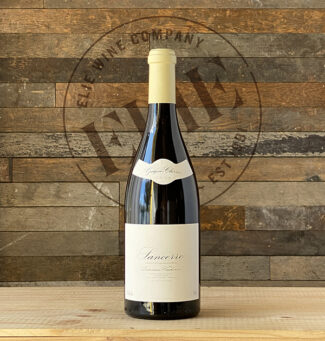 Climat ‘Guigne-Chèvres’ Domaine Vacheron 2018 Sancerre Blanc ($89)
Climat ‘Guigne-Chèvres’ Domaine Vacheron 2018 Sancerre Blanc ($89)
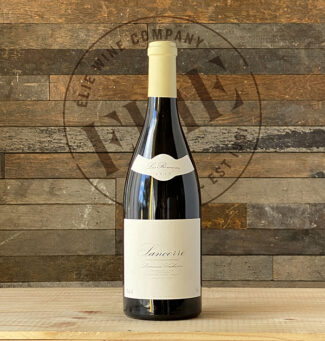 Climat ‘Les Romains’ Domaine Vacheron 2019 Sancerre Blanc ($75)
Climat ‘Les Romains’ Domaine Vacheron 2019 Sancerre Blanc ($75)
Les Romains is a flint terroir located in the eastern part of Sancerre where the soil bears a strong resemblance to the terroir across the Loire River in Pouilly-Fumé.
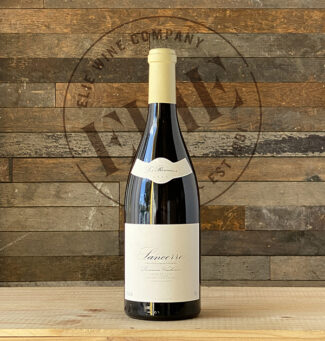 Climat ‘Les Romains’ Domaine Vacheron 2018 Sancerre Blanc ($89)
Climat ‘Les Romains’ Domaine Vacheron 2018 Sancerre Blanc ($89)
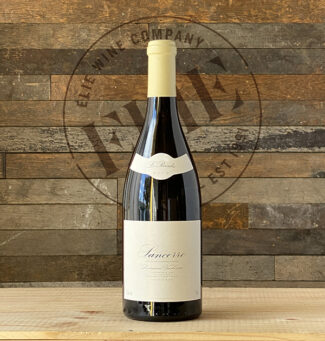 Climat ‘Le Paradis’ Domaine Vacheron 2019 Sancerre Blanc ($75)
Climat ‘Le Paradis’ Domaine Vacheron 2019 Sancerre Blanc ($75)
A safe bet in dry and warm vintages due to its old vines, the Vacherons own two acres Le Paradis on a steep, south-facing slope where the soil is so thin and poor that the vine roots grow deeply into fissures in the bedrock.
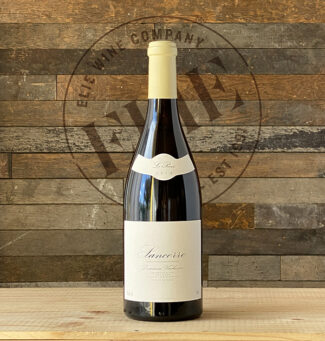 Climat ‘Le Pavé’ Domaine Vacheron 2018 Sancerre Blanc ($195)
Climat ‘Le Pavé’ Domaine Vacheron 2018 Sancerre Blanc ($195)
A cooler, east-facing vineyard and 30-year-old vines grown on ‘marnes de crétacé’—the fossilized marine life that typifies a band of chalky soils running through Champagne and Chablis.
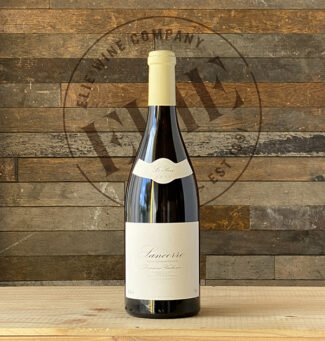 Climat ‘Le Pavé’ Domaine Vacheron 2017 Sancerre Blanc ($210)
Climat ‘Le Pavé’ Domaine Vacheron 2017 Sancerre Blanc ($210)
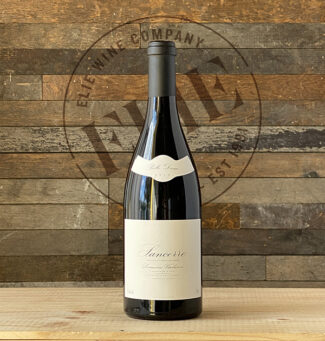 Climat ‘Belle Dame’ Domaine Vacheron 2018 Sancerre Rouge ($105)
Climat ‘Belle Dame’ Domaine Vacheron 2018 Sancerre Rouge ($105)
The first site-specific cuvée for the Vacherons, introduced in 1995 from one of the best known vineyards in Sancerre, beloved for its pure flint soils.
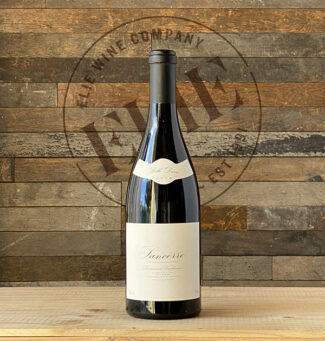 Climat ‘Belle Dame’ Domaine Vacheron 2016 Sancerre Rouge ($144)
Climat ‘Belle Dame’ Domaine Vacheron 2016 Sancerre Rouge ($144)
Notebook …
2022 August Report: Intense Heatwave Parches France’s ‘Garden’, Precipitates Premature Harvest
August 15 – Forced to start picking grapes much earlier than normal because of torrid temperatures, winemakers across France are worrying that grape quality will suffer from the climate-induced stress.
In the Loire, the so-called ‘Garden of France’ where parts of the Loire River have dried up completely, the crisis is magnified and the grape harvest is, by necessity, occurring earlier than normal.
The exceptionally dry conditions spread from the rugged hills of Hérault along the Mediterranean, where picking is already underway, to the normally verdant Alsace in the northeast. Waves of extreme heat this summer accelerated grape maturation, meaning harvests had to begin one to three weeks early or more — in Languedoc-Roussillon, some growers even started in late July.
Like other farmers, French winegrowers have been grappling for years with increasingly common extreme weather including spring freezes, devastating hailstorms and unseasonably heavy rains.
But this summer’s combination of a historic drought — July was the driest month on record since 1961 — and high temperatures are taking a particular toll on vineyards. Only 10 percent of France’s winegrowing parcels use artificial irrigation systems, which can be difficult or prohibitively expensive to install.
Although grapes are heartier than most crops, especially old vines whose roots delve deeply into the subterranean bedrock to find water, even they can withstand only so much. When water is scarce, the vines suffer “hydric stress” and protect themselves by shedding leaves and no longer providing nutrients to grapes, stunting their growth.
In Alsace, “we haven’t had a drop of rain in two months,” said Gilles Ehrhart, president of the AVA growers’ association. “We’re going to have a very, very small harvest” after picking begins around August 26, he said.
And when temperatures surpass 100 degrees Fahrenheit, “the grape burns — it dries up, loses volume and quality suffers” because the resulting alcohol content “is too high for consumers,” said Pierre Champetier, president of the Indication Géographique Protégée (IGP) for the Ardèche region south of Lyon. Champetier began harvesting Monday, when “40 years ago, we started around September 20,” he said. Now he worries that global warming will make such premature harvests “normal.”
– Quality at Risk –
Some winemakers are still holding off in hopes of rain in the coming weeks, such as red grape producers in Hérault, where harvests should begin as usual in early September.
In Burgundy, which two years ago saw its earliest harvest debut — August 16 — in more than four centuries of keeping track, picking will start at cellars in Saone-et-Loire around August 25.
But just south in the Rhône Valley, “the heatwave has accelerated maturation by more than 20 days compared to last year,” according to the Inter-Rhône producers’ association.
They nevertheless hope grape quality will hold up, as do Champagne growers in the northeast, where harvesting will begin late August — though yields are set to fall nine percent year-on-year because of a brutal spring cold snap and hailstorms.
- - -
Posted on 2022.08.18 in Sancerre, France, Wine-Aid Packages, Loire
Featured Wines
- Notebook: A’Boudt Town
- Saturday Sips Wines
- Saturday Sips Review Club
- The Champagne Society
- Wine-Aid Packages
Wine Regions
Grape Varieties
Aglianico, Albarino, Albarín Blanco, Albarín Tinto, Albillo, Aleatico, Arbanne, Aubun, Barbarossa, barbera, Beaune, Biancu Gentile, bourboulenc, Cabernet Franc, Cabernet Sauvignon, Caino, Caladoc, Calvi, Carcajolu-Neru, Carignan, Chablis, Chardonnay, Chasselas, Clairette, Corvina, Cot, Counoise, Erbamat, Ferrol, Fiano, Frappato, Friulano, Fromenteau, Fumin, Garnacha, Gewurztraminer, Godello, Graciano, Grenache, Grolleau, Groppello, Juan Garcia, Lambrusco, Loureira, Macabeo, Macabou, Malvasia, Malvasia Nera, Marsanne, Marselan, Marzemino, Melon de Bourgogne, Merlot, Mondeuse, Montanaccia, Montepulciano, Morescola, Morescono, Moscatell, Muscadelle, Muscat, Natural, Nero d'Avola, Parellada, Patrimonio, Petit Meslier, Petit Verdot, Pineau d'Aunis, Pinot Auxerrois, Pinot Blanc, Pinot Gris, Pinot Meunier, Pinot Noir, Poulsard, Prieto Picudo, Rondinella, Rousanne, Roussanne, Sangiovese, Sauvignon Blanc, Savignin, Semillon, Souson, Sparkling, Sumoll, Sylvaner, Syrah, Tannat, Tempranillo, Trebbiano, Trebbiano Valtenesi, Treixadura, Trousseau, Ugni Blanc, vaccarèse, Verdicchio, Vermentino, Viognier, Viura, Xarel-loWines & Events by Date
- April 2024
- March 2024
- February 2024
- January 2024
- December 2023
- November 2023
- October 2023
- September 2023
- August 2023
- July 2023
- June 2023
- May 2023
- April 2023
- March 2023
- February 2023
- January 2023
- December 2022
- November 2022
- October 2022
- September 2022
- August 2022
- July 2022
- June 2022
- May 2022
- April 2022
- March 2022
- February 2022
- January 2022
- December 2021
- November 2021
- October 2021
- September 2021
- August 2021
- July 2021
- June 2021
- May 2021
- April 2021
- March 2021
- February 2021
- January 2021
- December 2020
- November 2020
- October 2020
- September 2020
- August 2020
- July 2020
- June 2020
- May 2020
- April 2020
- March 2020
- February 2020
- January 2020
- December 2019
- November 2019
- October 2019
- September 2019
- August 2019
- July 2019
- June 2019
- May 2019
- April 2019
- March 2019
- February 2019
- January 2019
- December 2018
- November 2018
- October 2018
- September 2018
- August 2018
- July 2018
- June 2018
- May 2018
- April 2018
- March 2018
- February 2018
- January 2018
- December 2017
- November 2017
- October 2017
- September 2017
- August 2017
- July 2017
- June 2017
- May 2017
- April 2017
- March 2017
- February 2017
- January 2017
- December 2016
- November 2016
- October 2016
- September 2016
- August 2016
- July 2016
- June 2016
- May 2016
- April 2016
- March 2016
- February 2016
- January 2016
- December 2015
- November 2015
- October 2015
- September 2015
- August 2015
- July 2015
- June 2015
- May 2015
- April 2015
- March 2015
- February 2015
- January 2015
- December 2014
- November 2014
- October 2014
- September 2014
- August 2014
- July 2014
- June 2014
- April 2014
- March 2014
- February 2014
- January 2014
- December 2013
- November 2013
- October 2013
- September 2013
- August 2013
- July 2013
- June 2013
- May 2013
- April 2013
- March 2013
- February 2013
- January 2013
- December 2012
- November 2012
- October 2012
- February 2004
Search



